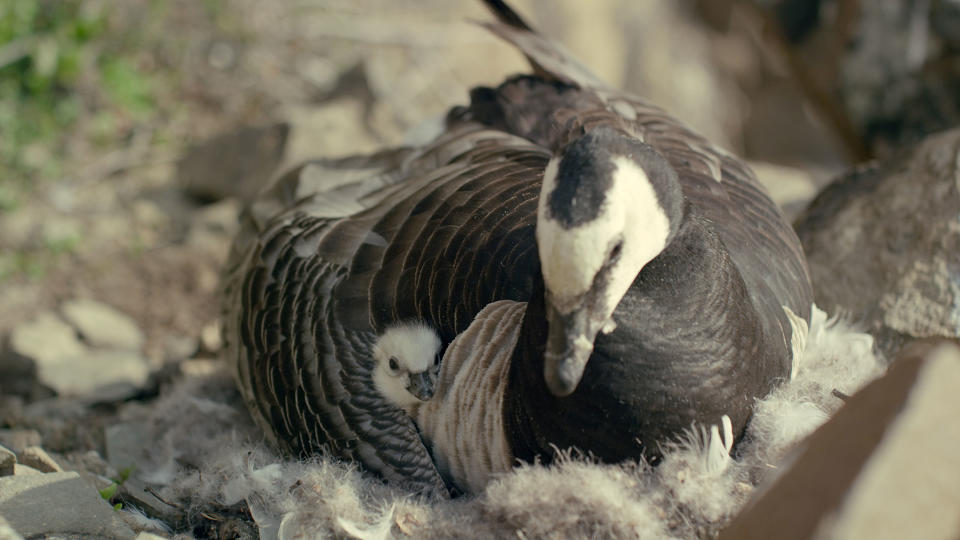‘Hostile Planet’: The NatGeo Series Shows How, In a Changing Climate, Only Survival Matters

Click here to read the full article.
“Hostile Planet” has a truly shocking opening: a snow leopard, tasked with finding food in a rapidly advancing spring, tumbles with its prey 200 feet down the side of an impossibly steep mountain. In the context of a different nature series, that moment might be framed as an unfortunate instance of a predator victory.
For the series’ executive producer Guillermo Navarro, that opening not only signals what makes “Hostile Planet” different from other nature programming, it’s a testament to the persistence of the camera crew that captured the moment.
More from IndieWire
'Game of Thrones': Unleashing Drogon's Godzilla Force in the 'Battle of King's Landing'
Amazon Took Over Los Angeles to Promote 'Marvelous Mrs. Maisel,' But Police Had to Intervene
“They were not getting anything. Just glimpses of it, nothing to build a story from. They were running out of food, and they were very tired and cold. It was just a brutal effort. They asked to come back and we said, ‘Stay one more week.’ In the last three days of that week, they shot everything you saw. I don’t think there’s any footage like this,” Navarro said earlier this week at an International Documentary Association event in Los Angeles.
After that in medias res opening, the first episode of “Hostile Planet” tracks the experiences of the fateful snow leopard that prompted such a drastic, risky pursuit of something to eat. Against the backdrop of an uncommonly warm spring, Navarro wanted to make sure that this series reflected the need for a more urgent way to tell stories of animals’ growing struggles.
“In the traditional natural history documentaries that we’ve seen for the last 50 years, the focus is very much of on what I call the ‘paparazzi moment.’ Everything’s about the kill and the other victim. It’s very centered on ‘That’s how animal life is. There’s always a prey and a predator.’ But they never really tell stories. So it was important for me to change the narrative. Here, what I fought for tremendously was to diminish the proportion of narration and allow film language to tell the complete story,” Navarro said.

Part of that pursuit meant incorporating some other unconventional storytelling methods. “Hostile Planet” is composer Benjamin Wallfisch’s first documentary project, following work on films like “Shazam!” “IT,” and “A Cure for Wellness.” To create a distinct sonic landscape for the series, he and Navarro looked to nature itself to find a special layer for the score.
“We had an early discussion about how we could, under the surface, use the sound of the ice moving, to slow it down and put it through reverbs to create an ambience. It’s beautiful when you combine it with a string orchestra. We did a lot of experiments which didn’t work, literally using percussion from footsteps. But what we found was that if you just do one thing and let the orchestra do the rest, it had the right effect,” Wallfisch said.
Aside from giving nature a figurative voice in the “Hostile Planet” music, Wallfisch also wanted to have a literal one too. At key moments, the show’s score calls on the services of singer Judith Hill, whose voice blends with the rest of the series’ massive orchestral sound. Beyond bringing in a distinctly human element to the music, Wallfisch wanted Hill’s contributions to take on an even greater symbolic meaning.
“I wanted to try to come up with this idea of Mother Earth crying out, to personify that image. The only way I could do that was through a way that didn’t feel tied to a particular region. It needed to feel ‘of Earth.’ A lot of that was asking Judith to improvise around our main theme. In the way that you don’t know which way water is going to flow, we were trying to use those images when she was improvising,” Wallfisch said.
Though “Hostile Planet” largely avoids direct, explicit reference to climate change, shifting global conditions are one of the driving forces of the series, if not its primary reason for existing. One of the reasons the episodes aren’t grouped by strict geographical region or by species type is that rising temperatures have leveled so many of these animals’ pursuits. For the viewer, the traditional rooting interests or functional distinctions give way to an experience that prizes staying alive over so much else.

“It was not a matter of proving, ‘It’s 2 degrees higher than it was last year.’ It’s a delicate process of grounding what it’s like to be them today. It’s not about finding that picture that shows a cartoon of the change. They’re learning at a very high cost. We wanted the audience to go through it, to experience what it’s like to be them,” Navarro said. “For them, it takes the whole fight on how hard it is for them to survive and live their lives because of what has happened in the climate. So the story of a leopard or a bear in the Arctic 50 years ago has nothing to do with today’s reality. The idea was that if we ‘hit it on the nose,’ it became more of a pamphlet. By doing that, it would lose weight. So we decided that the learning curve throughout the series, the premise is ‘what it’s like to be them now.'”
Even with the way that “Hostile Planet” shows some dire conditions for wildlife in areas across the globe, Wallfisch wanted there to still be a balance to the series’ more somber moments.
“You had to find the one thing that every episode has in common, and that was hope. It was really hard to do that on the screen, because we didn’t want to sugarcoat anything. A lot of these documentaries, they pick the positive outcomes over the negative ones, but we didn’t want to go there. We wanted to show the truth,” Wallfisch said. “It’s very hard to watch something where you come away feeling just devastated and drained. But we did want to infuse the sense that there is optimism here. We have the power to change. The most influential species on the planet can reverse still the course which has been set. We have a duty to do that.”
Final-round Emmy voting is open from Thursday, Aug. 15 through Thursday, Aug. 29 at 10 p.m. PT. Winners for the 71st Primetime Emmys Creative Arts Awards will be announced the weekend of Sept. 14 and 15, with the Primetime Emmys ceremony broadcast live on Fox on Sunday, Sept. 22.
Sign up for Indiewire's Newsletter. For the latest news, follow us on Facebook, Twitter, and Instagram.


